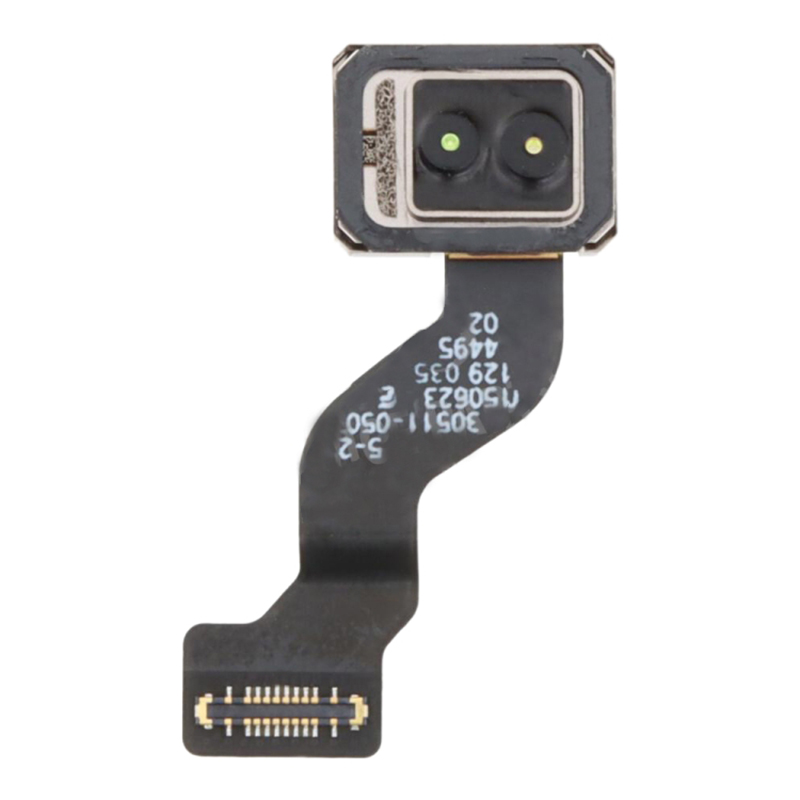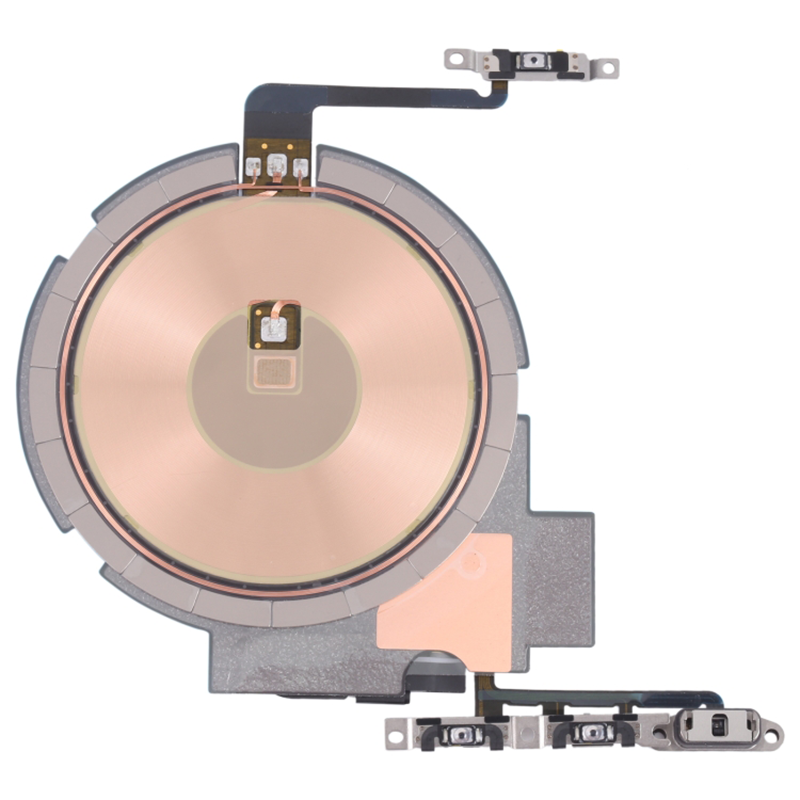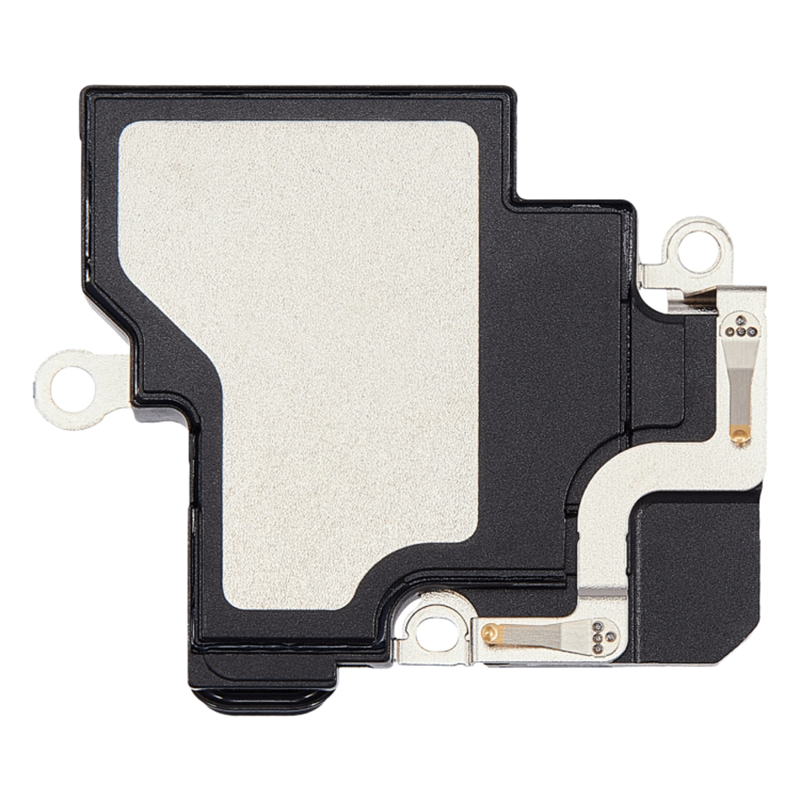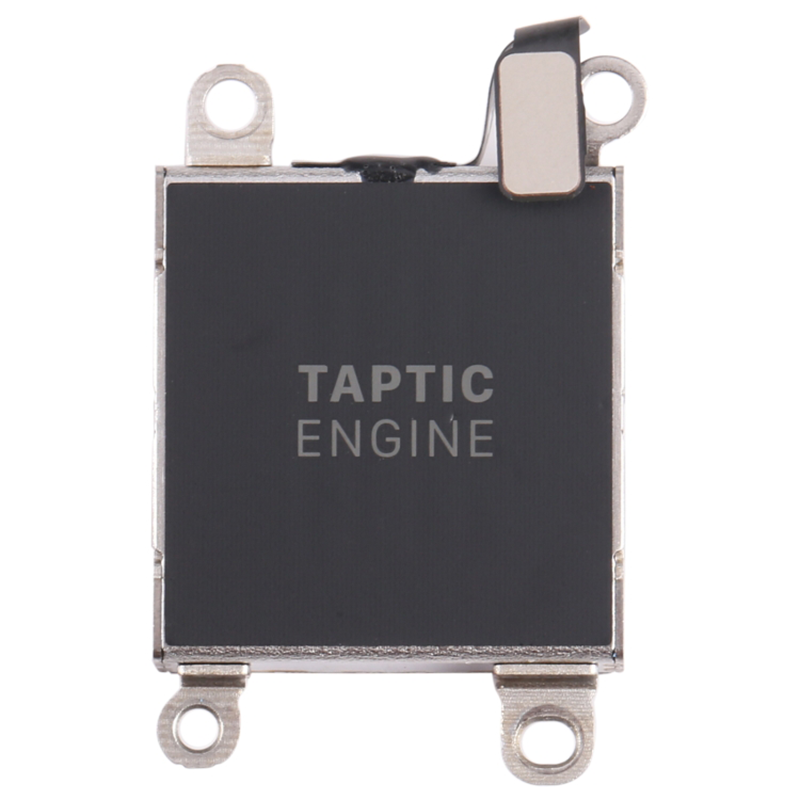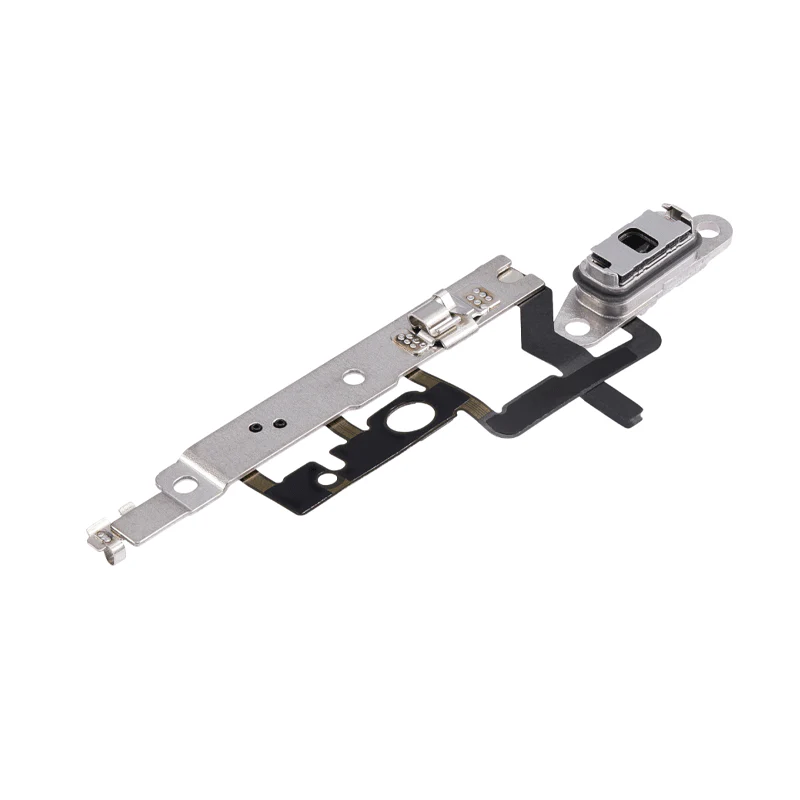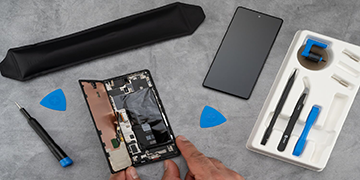Repairability comes from thoughtful design. In the case of the Fairphone 5, for example, the battery can be removed in just four steps, thanks to a back panel
that’s secured with clips rather than glue, a pin connector rather than a cable, and a tab on the battery that makes it easy to pry it out with a fingernail.
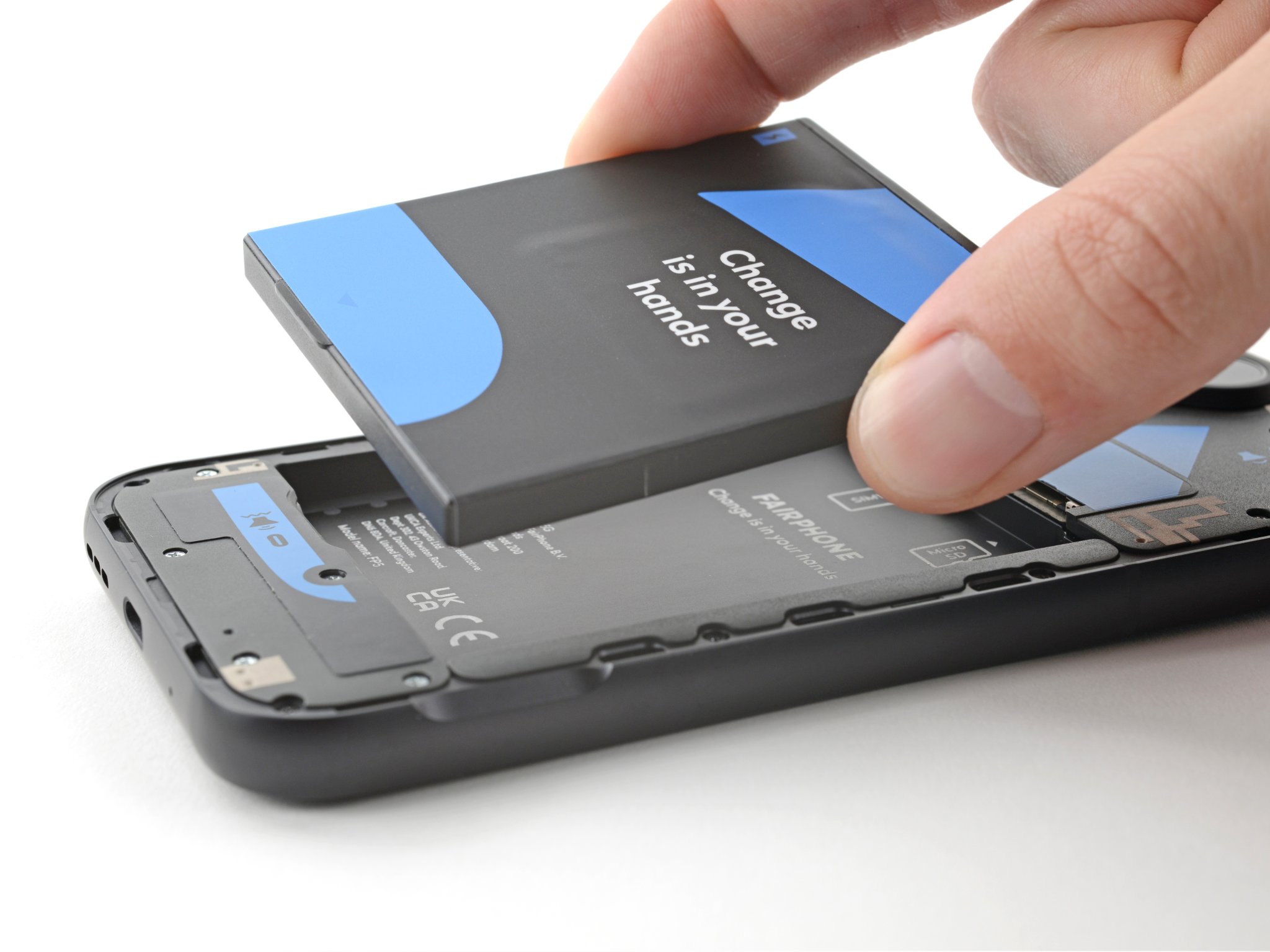
But repairable design is just the beginning. Without the right support structures, even the most well-designed device may never be repairable. What good
is a replaceable battery or screen if a new one can’t be installed, or installed by yourself?
For a device to be truly repairable, there must be a comprehensive repair ecosystem to support it. As “right to repair” becomes the industry standard through
legislation and consumer demand, companies that want to excel in repairability must build this ecosystem or be left behind.
Repair is cost-effective
Supporting repairs is not only the right thing to do, it also makes good business sense.
Leading OEMs like Google, HMD, Logitech, HP, and Lenovo are already building strong repair ecosystems. This means they are ready to comply with Right to
Repair laws and attract consumers who want repair options beyond mail-in support.
All five manufacturers support a variety of repair options, including in-house repairs, authorized repairs, independent repairs, and self-service repairs. Some
OEMs even support all repair options. For example, to get your Pixel phone repaired, you can take it to one of Google’s seven physical stores, mail it in, go to
an authorized service provider, go to an independent repair shop, or even do it yourself.
![]()
But there’s no single right way to create and sustain a repair ecosystem. Ultimately, it comes down to taking the most effective steps to support and encourage
your user base. However, there are a few things any OEM should consider as they strive to create a truly repairable device.
Different maintenance channels, different benefits
The choice of repair channel depends on many factors. How many customers do you have? How easy is it for your customers to repair your product themselves?
Where do your customers live? How important is your product to your customers’ daily lives? What do your customers expect?
What can you as an OEM effectively implement? (Because let’s be honest, a bad repair experience is worse than no repair experience.)
Ultimately, how you support repairs depends on your specific situation and business model. Here are some factors to consider when making this choice.
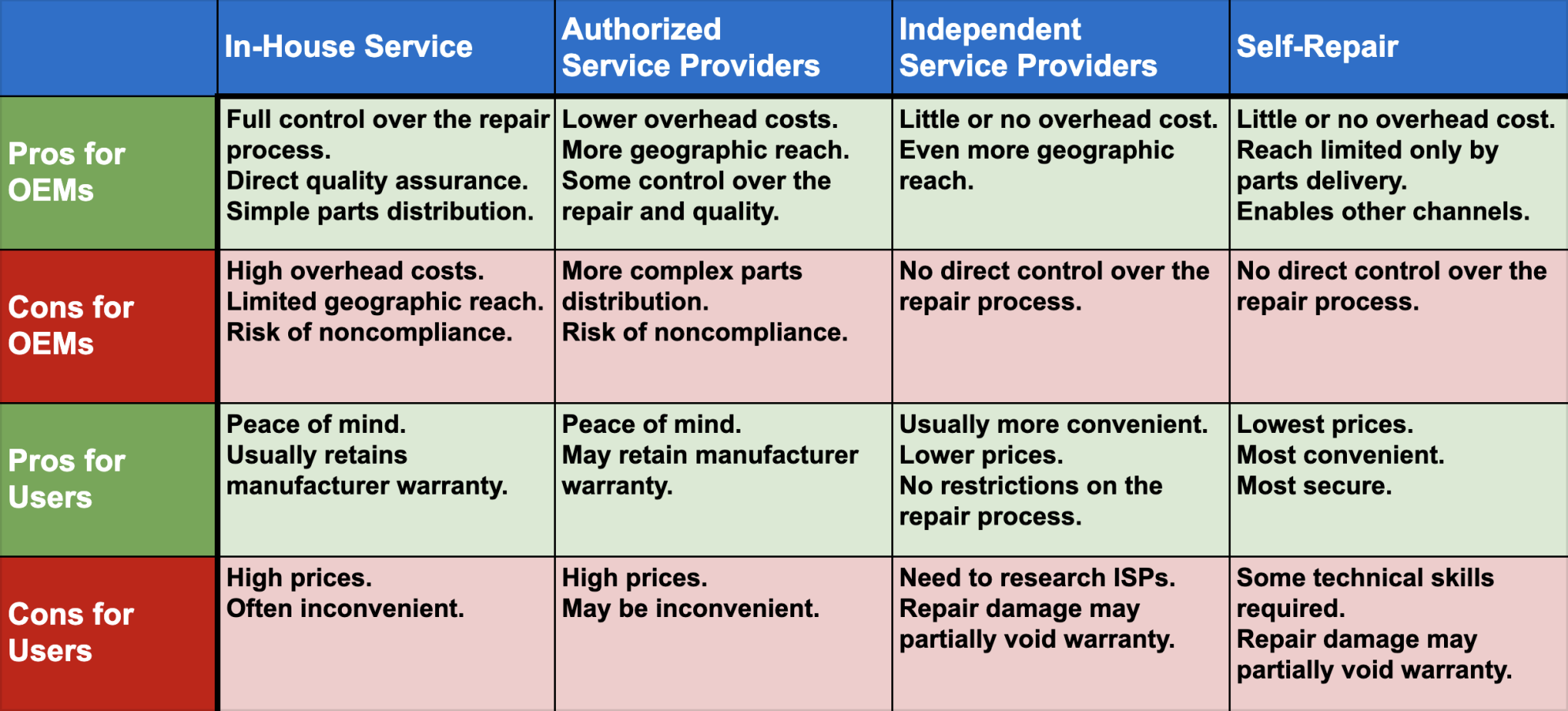
In-house maintenance services
Offering repair services directly is the best way to have full control over your device and the repair process. (Though in-house repairs aren’t the only way to get a high-quality repair.) It’s also the simplest option in terms of the parts supply chain, since the OEM is only responsible for shipping parts to its own factory.
Consumers can rest assured knowing that the people who built their device and know it best are repairing it. Typically, devices repaired in-store also retain the manufacturer’s warranty. (But warranties can be complicated, and there are some common misconceptions about how repairs affect your warranty. More on that later.)
However, in-house repairs do have some disadvantages. For OEMs, the administrative costs can be high. They have to train technicians and maintain repair centers, and they lack the scale advantages of repairing other brands’ devices. They can only repair the OEM’s own products. This often means consumers pay a higher price than other options.
In-store repair services are also often inconvenient for consumers. Manufacturers often have few physical stores for customers to repair, so they either have to go out of their way to a physical store or have to ship the device back for days before they can get it. This may be fine for some devices to be out of service for a few days or weeks, but for critical devices like smartphones, this can be a deal breaker.
But a word of caution: Offering only in-house repair services could put manufacturers in violation of right-to-repair laws, which require OEMs to provide documentation and parts on fair and reasonable terms to anyone who wants them.
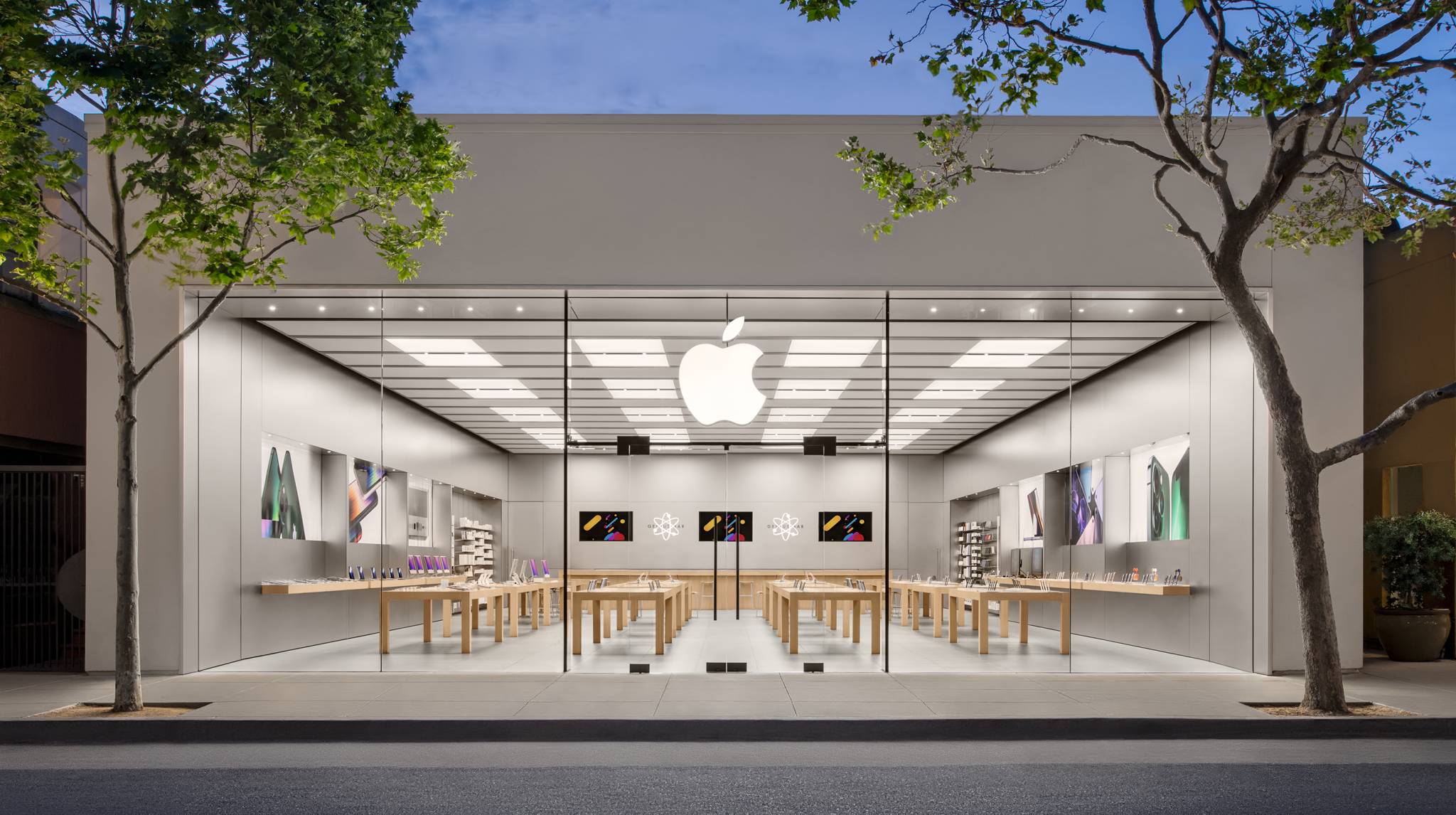
Apple Stores offer in-store repairs. Image courtesy of Apple.
Authorized Service Provider (ASP)
Authorized service providers allow manufacturers to outsource repair work while still retaining some control over the repair process. Authorized service providers operate under the authority of the original equipment manufacturer (OEM), who provides tools, parts, documentation, and training. Authorized service providers are more cost-effective because they can work with multiple OEMs and thus repair more devices. Consumers also have peace of mind knowing that the service provider is directly supported by the OEM.
Leveraging an ASP can also expand the OEM’s reach. By partnering with existing repair centers, OEMs can expand their geographic coverage at a lower cost than if they created their own repair centers. This gives consumers more choices for on-site repairs while maintaining the perception of quality service.
Another benefit for consumers is that many manufacturers will provide a full warranty on devices repaired by an ASP. (Although in the United States, the Magnuson-Moss Warranty Act requires manufacturers to honor warranty obligations after any successful repair, even if it is a third-party or DIY repair.) In addition, if something goes wrong during the repair process, the ASP or manufacturer should have a plan to ensure that the customer receives a functioning device at no additional cost.
One downside to using an ASP is that customers still need to make an appointment to go somewhere or send the device in for repair. In some locations, the option of going to an ASP in person may be as limited as going to an OEM store.
In addition, the ASP has a financial agreement with the OEM that may include periodic payments in exchange for authorization, a line of credit, or a minimum purchase volume agreement. The ASP may also impose additional requirements on marketing or operations. All of this has the potential to increase costs for consumers.
Independent Service Provider (ISP)
Independent service providers (ISPs) are not formally authorized to perform repairs and are not usually directly supported in any way by the OEM, but they are an important part of the repair ecosystem. As long as the OEM provides documentation, parts, and tools, ISPs can provide on-site service in more locations than ASPs or in-house repairs, while still providing the same service standards.
The biggest advantage of ISPs for both OEMs and consumers is their cost. Since ISPs do not require any services from the OEM other than repair documentation and spare parts, the operating cost for the OEM is very low. (Also, if the OEM already provides documentation and parts to the ASP, there may be no additional operating costs.) For consumers, since ISPs have no financial or other obligations to the OEM, their service prices are generally lower.
Even if ISPs have a wider geographic coverage, it may still be inconvenient for people to travel to these service points. In addition, this greater accessibility and lower costs also reduce consumer peace of mind because these repair shops are not trained by and are not accountable to the OEM. However, despite this perception, ISPs are often able to provide the same or better quality of service than you would get in your car or through an ASP. And, because they are not bound by an agreement with the OEM, they may be able to use innovative technology to provide better or cheaper repairs.
For devices under warranty, there is another problem. Damage caused by an ISP repair will often void the manufacturer’s warranty. While it is illegal to void a warranty due to a successful repair (regardless of how the repair was done), the OEM can deny the claim if they can prove that the fault in the warranty claim was caused by a repair.
Self-healing
Self-service repair is at the forefront of repair support. This is where OEMs are differentiating themselves, like with ReviveKit from HP. While many companies have settled on in-house support, ASPs, and ISPs, OEMs are starting to compete and innovate in the self-service repair space.
This repair channel minimizes operating costs for OEMs and provides the most convenient (and affordable) option for consumers. Self-service repair also saves customer service teams time, as they don’t have to coordinate repairs and instead direct customers to repair resources on their own.
For original equipment manufacturers (OEMs), enabling self-service repair means making parts, tools, and documentation available to anyone who needs them. Staying competitive in self-service repair means making the repair process easy and safe, documentation clear and effective, and making the self-service option obvious and attractive.
Self-service devices foster loyalty as customers grow to believe that the device is durable and worth the money. This means OEMs have a base of customers who are not only willing to make future purchases, but also willing to recommend it to their friends. Customers who are able to repair their own devices will have a strong and meaningful connection with the brand.

Properly supported self-repair also brings convenience to consumers. They don’t need to go to a service center or spend hours breaking their own devices. Instead, they can repair it themselves in the comfort of their own home, at the cost of parts and tools.
One disadvantage of self-repair is that it requires certain technical skills, and more commonly, “repair phobia”. With the right tools and instructions, people can fix a lot of things. But they are often afraid to try. What if they break something worse? What about the warranty? While this issue can be mitigated through positive publicity and conscious investment in self-repair support, it should be explicitly addressed.
A big advantage of enabling self-repair is that it unlocks all other support channels. If OEMs first build a strong self-repair ecosystem, they can easily support in-house repair, ASP repair, and ISP repair.
Finally, self-repair democratizes repair. It is the most convenient, affordable, and reliable way to repair. Consumers also want it, and although there are some risks in self-repair, the risks are not as great as they may think.
What about the warranty?
First, a macro question: How much support do original equipment manufacturers (OEMs) need to provide for out-of-warranty devices? It depends. In the European Union, OEMs are obligated to provide repairs for their devices “within a reasonable time and at a reasonable price,” and that includes out-of-warranty devices. In the United States, California’s Right to Repair law requires manufacturers to stock parts and tools for devices that cost more than $100 and keep up-to-date repair documentation for seven years, regardless of warranty terms.
Original equipment manufacturers (OEMs) often choose to offer in-house or ASP repair services for in-warranty repairs. This allows the OEM to collect data about the nature of the failure and ensure that the repair is covered under warranty. Offering in-warranty repairs this way also makes it easier for the OEM to offer a replacement if the device cannot be repaired.
But these options can be less convenient for consumers, who may prefer to go to an Internet Service Provider (ISP) or do the repair themselves. Does this void the warranty? The answer is: No. Consumers have the right to open up their devices and use any parts they want to repair them without voiding the warranty. However, it is important to note that if a repair results in damage to the device, the original equipment manufacturer (OEM) can deny warranty claims for that specific damage. Claims for other damage not related to the repair will still be valid.
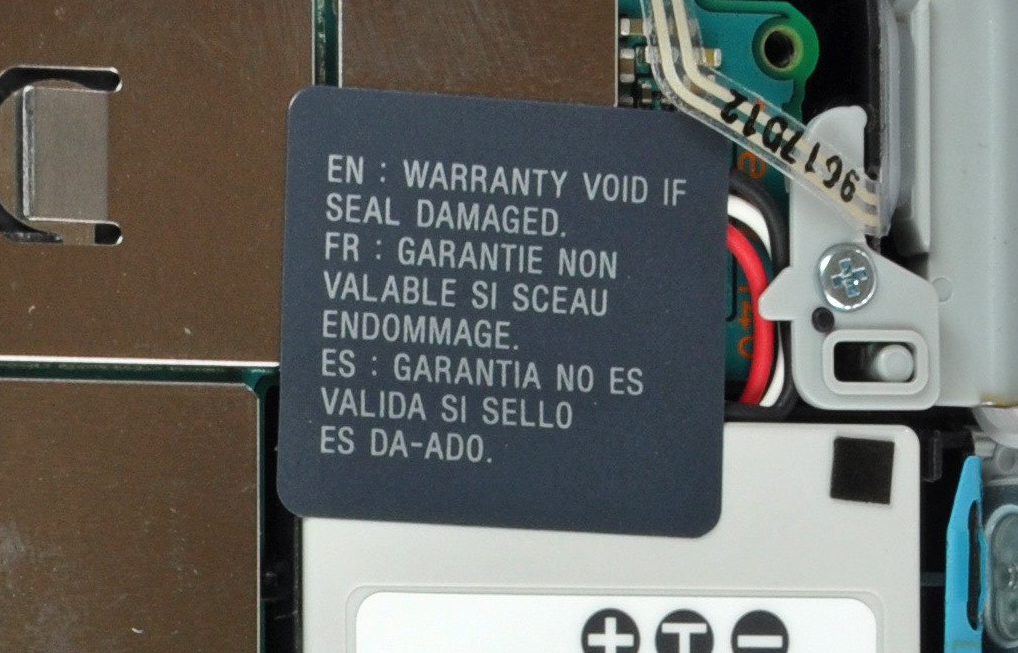
Supporting out-of-warranty repairs is simpler. For most consumers, it’s really just a question of cost, both in terms of money and time. Most consumers will only repair their device if the total cost of the repair is about 25% of the cost of buying a new device. They also want the repair to be timely—for smartphones, people are willing to wait a little over four days on average.
Therefore, effectively supporting out-of-warranty repairs usually means allowing repairs to be performed through an Internet Service Provider (ISP) or through self-service. These options have the lowest cost and shortest wait time of all available options, and are therefore most likely to keep customers happy.
What’s right for you?
There are four main ways to provide repair support: in-house repair, ASP, ISP, and self-repair. Each has its own pros and cons, but they can work together to create the robust and comprehensive repair ecosystem that customers (and legislators) want.
The best and simplest advice is to start by enabling self-repair capabilities. If you can create a repair support system that follows the 13 principles in the Repair Gold Standard, you will be well on your way to ensuring regulatory compliance and offering a variety of repair support options, from in-house repair to independent repair.
Here are some important questions to ask as you consider expanding beyond self-repair:
- What customer needs cannot be met through self-repair? Can these needs be met through an ISP, ASP, or in-house repair?
- How much money and time does it cost to enable and support each additional repair channel?
- What is the most cost-effective way to balance overhead costs, ongoing costs, internal labor requirements, customer coverage, and customer convenience?
Fine-tuning a restoration ecosystem requires trial and error, and sometimes it is difficult to sell the value of a restoration ecosystem to internal stakeholders. Any effort to achieve restoration should be tied to key performance indicators (KPIs), and its value must be consistently communicated across departments. For example, achieving self-healing could have a positive impact on the following metrics:
- Net Promoter Score
- Number of warranty claims
- Parts sales revenue
- The amount of time customer service spends on repair-related issues
- Media Sentiment Score
- Environmental and Sustainable Development Goals





